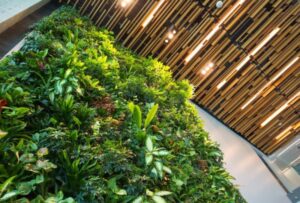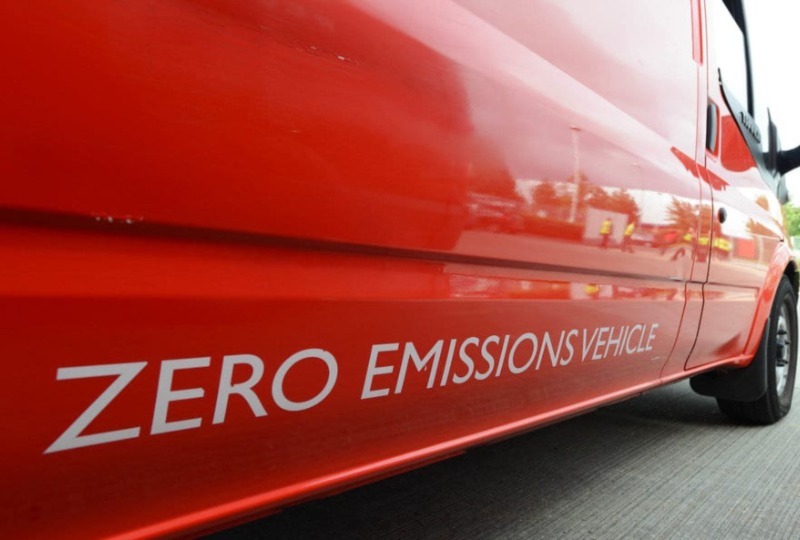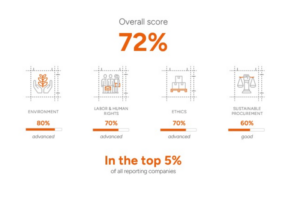Sustainable Clearances and Fit Outs: The Key to Minimising Environmental Impact
In an era where climate change has become our reality, and the shocking consequences are seen daily, it is clear that every industry must play a part in adopting sustainable practices to get anywhere near our climate goals. The focus must expand beyond day-to-day operations to include sustainable clearances and fit outs.
Traditionally, the industry has stuck to a linear approach to their workplaces. Brand new office spaces, perfect for five years with proper maintenance, then chuck it out and start again. Thousands of tonnes of embodied carbon are created and then wasted. It simply cannot continue.
Written by Ashley Lawrence

Head of Furniture and Fit Out
Ashley Lawrence is the Head of Furniture and Fit Out for Crown Workspace. He believes that by having a sustainability focus in our workplaces, we can encourage families and friends to be environmentally responsible too.

Understanding Clearances and Fit Outs
Before delving into the importance of sustainability in clearances and fit outs, it’s essential to understand these terms. Clearances refer to removing furniture, fixtures, and other items from space, often in preparation for renovation or office relocation. Fit outs, on the other hand, involve designing and installing new interiors or features in a building.
Both processes typically generate significant waste, energy consumption, and resource utilisation. Traditional clearances and fit outs often lead to landfill waste and the use of non-renewable materials, further exacerbating environmental issues
The Path to Sustainability
To address these environmental challenges, the construction and interior design industries must embrace sustainable practices for clearances and fit outs. Here are five key strategies to consider:
-
Reuse and Recycle
The most environmentally friendly products are the assets we already own! Instead of sending furniture and fixtures to be recycled, explore options for reuse or refurbishment. Refurbishment can give furniture a new lease of life, even an extended warranty on some products. If your current assets are unsuitable for reuse or refurbishment, consider selling them for reuse and purchasing used refurbished items.
-
Energy Efficiency
Emphasise energy-efficient processes and appliances during fit outs. Choose lighting systems, HVAC solutions, and other equipment that reduce energy consumption and carbon emissions. This can further be achieved by installing solar panels wherever possible. Schemes are in place to pay for new installations with the savings made by reducing energy, making it cost-neutral!
-
Renewable Materials
Opt for sustainable and renewable materials in construction and fit outs. So many innovative products are on the market, giving a range of choices like never before! Separating genuinely sustainable products from greenwashing is challenging, so look to unbiased sources or expert views. Our choices help conserve natural resources and promote healthier indoor environments, so it’s worth researching.
-
Green Certifications
Consider obtaining green certifications such as LEED, BREEAM, SKA, or WELL. These certifications validate your commitment to sustainability and environmentally friendly practices, as well as the health of your teams.
-
Long-Term Planning
Develop a long-term plan for the building’s lifecycle, including future clearances and fit outs — design flexible to accommodate changing needs without significant waste generation.
The Business Case for Sustainability
Aside from the obvious environmental benefits, incorporating sustainable practices in clearances and fit outs offers businesses several advantages. Here are our top four:
-
Cost Savings
Energy-efficient solutions and reuse initiatives can reduce operational costs over time, providing financial benefits to businesses.
-
Enhanced Reputation
Embracing sustainability enhances a company’s reputation and can attract environmentally conscious clients and partners.
-
Regulatory Compliance
Many regions are implementing stricter environmental regulations. By adopting sustainable practices, businesses can ensure compliance with future environmental standards.
-
Employee Satisfaction
Employees are increasingly drawn to organisations that demonstrate a commitment to environmental responsibility. A sustainable workplace fosters a sense of pride and satisfaction among staff.
In summary, sustainable clearances and fit outs are essential to reducing the environmental impact of the construction and interior design industries. By prioritising practices that emphasise waste reduction, energy efficiency, and using renewable materials and furniture, businesses can play a crucial role in mitigating climate change and preserving the planet for future generations. As more companies embrace sustainability, the entire industry can move towards a greener, more environmentally responsible future.
Our team of experts is dedicated to delivering the end result for our clients with as little hassle as possible – so you get the commercial office fit out you want without tearing your hair out. Get in touch today, or if you’re looking for an office relocation, Crown Workspace can support you through our designated office relocation services.
If you want to reach out me directly, get in touch here!
Related stories
In this blog, we delve into workplace consultancy, exploring the intricacies of workplace change and space utilisation strategies and their profound implications for businesses.
Sustainability remains a top business priority for Crown in the UK & Ireland and globally; we are therefore delighted to have launched our 2023 UKI Sustainability Report!
Crown are delighted to announce that we have been awarded Gold by EcoVadis in 2024 for the second time, reflecting our commitment to and progress in becoming a responsible business.




















